Interventions for preventing falls in older people in care facilities
- PMID: 40832852
- PMCID: PMC12365945
- DOI: 10.1002/14651858.CD016064
Interventions for preventing falls in older people in care facilities
Abstract
Rationale: Falls in care facilities are common events, causing considerable morbidity and mortality for older people. This is an update of a review on interventions in care facilities and hospitals first published in 2010 and updated in 2012 and 2018 on interventions in care facilities and hospitals. This review has now been split into separate reviews for each setting.
Objectives: To assess the benefits and harms of interventions designed to reduce the incidence of falls in older people in care facilities.
Search methods: We searched the Cochrane Central Register of Controlled Trials (CENTRAL), MEDLINE, Embase, CINAHL, and two trial registers to 10 May 2024 and used reference checking, citation searching, and contact with authors to identify eligible trials and records.
Eligibility criteria: We included randomised controlled trials (RCTs) of any intervention for preventing falls in older people (aged over 65 years) in care facilities with any comparator. We excluded trials conducted in places of residence that do not provide residential health-related care or rehabilitative services. We excluded trials where falls were recorded as adverse events of the intervention and those recruiting participants post-stroke or living with Parkinson's disease.
Outcomes: Critical outcomes were rate of falls (number of falls per unit time) and number of fallers (risk of experiencing one or more falls). Important outcomes were risk of fracture, adverse events, and economic outcomes.
Risk of bias: We assessed risk of bias in the included studies against nine items (seven items from Cochrane's RoB 1 tool, plus method of ascertaining falls and baseline imbalance).
Synthesis methods: Two review authors independently performed study selection and data analysis. We calculated rate ratios (RaR) with 95% confidence intervals (CIs) for rate of falls and risk ratios (RRs) with 95% CIs for outcomes of risk of falling (number of people falling) and risk of fracture. We adjusted for clustering if not undertaken by trial authors. We grouped the results of trials with comparable interventions and participant characteristics, and pooled results where appropriate using the generic inverse variance method in RevMan. We conducted subgroup analyses according to intervention type, cognitive status, and informed by a qualitative comparative analysis where more than 10 trials were pooled and heterogeneity was high. Where pooling was precluded by the nature of the data, we presented trial data in tables for illustrative purposes or reported these in the text, or both. We used GRADE to assess the certainty of evidence. GRADE ratings of risk of bias were based on sensitivity analyses excluding trials at high risk of bias.
Included studies: We included 104 trials, 56 individually randomised and 48 cluster-randomised trials, with 68,964 participants. Thirty-three trials (27,492 participants) were added in this update. We assessed most of the included trials as at high risk of bias, often related to lack of blinding, which was rarely feasible for many intervention types. The certainty of evidence for the critical outcomes of falls ranged from high to very low. We have reported the critical outcomes for the main comparisons here. Regarding our important outcomes, adverse events were poorly reported, and the certainty of evidence was very low for all interventions; we have not reported these data here. The important outcomes of risk of fracture and cost-effectiveness are only reported here when the certainty of the evidence was stronger than very low.
Synthesis of results: Multifactorial interventions. Overall, multifactorial interventions (i.e. two or more categories of intervention delivered based on individual risk profile) probably have little or no effect on the rate of falls (RaR 0.87, 95% CI 0.68 to 1.12; I² = 89%; 12 trials; 4843 participants; moderate-certainty evidence), but probably reduce the risk of falling (RR 0.91, 95% CI 0.83 to 1.00; I² = 19%; 11 trials; 4557 participants; moderate-certainty evidence). Multifactorial interventions may be cost-effective in reducing falls (GBP 20,889 per quality-adjusted life year, UK health and social care perspective; 1 trial; 1657 participants; low-certainty evidence). A subgroup analysis informed by qualitative comparative analysis indicated that multifactorial interventions delivered in a tailored manner according to resident individual circumstances (e.g. living with dementia) with facility staff engagement have greater effects (P < 0.001) than those not delivered in this manner, and probably result in a large reduction in rate of falls (RaR 0.61, 95% CI 0.54 to 0.69; I² = 0%; 7 trials; 3553 participants; moderate-certainty evidence) and risk of falling (RR 0.81, 95% CI 0.71 to 0.92; I² = 0%; 5 trials; 2993 participants; moderate-certainty evidence). All trials included assessment of environmental and personal risk factors (including medication optimisation and assessment of need for assistive aids) and exercise interventions. Exercise. As a single intervention, exercise was compared with usual care in 28 trials. At the end of the intervention period, active exercise probably reduces the rate of falls (RaR 0.68, 95% CI 0.51 to 0.91; I²= 84%; 14 trials; 2215 participants; moderate-certainty evidence) and risk of falling (RR 0.86, 95% CI 0.75 to 1.00; I² = 37%; 13 trials; 2408 participants; moderate-certainty evidence), but may have little or no effect on risk of any fracture (RR 1.01, 95% CI 0.58 to 1.78; 3 trials; 927 participants; low-certainty evidence). After a period of post-intervention follow-up, if active exercise is not sustained there is no effect on rate of falls (RaR 1.02, 95% CI 0.78 to 1.32; I² = 64%; 7 trials; 1354 participants; high-certainty evidence) and probably no effect on risk of falling (RR 1.06, 95% CI 0.92 to 1.23; I² = 17%; 7 trials; 1443 participants; moderate-certainty evidence). Active exercise may be cost-effective in reducing falls (AUD 18 per fall avoided, Australian health service perspective; 1 trial; 221 participants; low-certainty evidence). A subgroup analysis based on level of cognition indicated that active exercise may reduce the risk of falling in residents with cognitive impairment (RR 0.72, 95% CI 0.57 to 0.91; 4 trials; 451 participants; low-certainty evidence). Medication optimisation. As a single intervention, medication optimisation interventions were diverse, but overall may make little or no difference to rate of falls (RaR 0.92, 95% CI 0.75 to 1.13; I² = 86%; 13 trials; 4314 participants; low-certainty evidence) and probably make little or no difference to risk of falling (RR 0.96, 95% CI 0.89 to 1.03; I² = 0%; 12 trials; 6209 participants; moderate-certainty evidence). We are uncertain of the impact of medication review/deprescribing on falls outcomes (RaR 0.94, 95% CI 0.76 to 1.18; I² = 86%; 12 trials; 4125 participants; very low-certainty evidence; RR 0.90, 95% CI 0.80 to 1.01; I² = 0%; 9 trials; 1934 participants; very low-certainty evidence). Medication review/deprescribing as a single intervention may not be cost-effective (intervention had higher costs and falls, UK National Health Service and care home perspective; 1 trial; 826 participants; low-certainty evidence). Vitamin D supplementation. Vitamin D supplementation (with or without calcium supplementation, alone or within a multivitamin) probably reduces the rate of falls (RaR 0.63, 95% CI 0.46 to 0.86; I² = 72%; 5 trials; 4603 participants; moderate-certainty evidence) but probably makes little or no difference to the risk of falling (RR 0.99, 95% CI 0.90 to 1.08; I² = 12%; 6 trials; 5186 participants; moderate-certainty evidence). The population in these trials had low vitamin D levels. Nutrition: dairy food supplementation. Increasing servings of dairy to residents through dietitian assistance with menu design to enhance protein and calcium through provision of dairy foods may decrease the risk of falling and fractures from falls (RR 0.89, 95% CI 0.79 to 1.00; RR fracture 0.67, 95% CI 0.48 to 0.93; 1 trial; 7195 participants; low-certainty evidence).
Authors' conclusions: Multifactorial interventions implemented with facility staff engagement and tailored intervention delivery according to individual residents' circumstances probably reduce the rate of falls and risk of falling and may be cost-effective. Regarding single interventions, exercise probably reduces the rate of falls and the risk of falling, but if exercise is not sustained it has no ongoing effect on the rate of falls and probably no effect on the risk of falling. Active exercise may reduce the risk of falling in residents with cognitive impairment and may be cost-effective. Medication optimisation interventions were diverse overall and may make little or no difference to the rate of falls and probably little or no difference to the risk of falling. We are very uncertain of the effectiveness of medication review/deprescribing as a single intervention at reducing falls. Vitamin D supplementation probably reduces the rate of falls but probably makes little or no difference to the risk of falling. Addressing nutrition, increasing servings of dairy through dietitian assistance with menu design may decrease the risk of falling and risk of fractures.
Funding: The Australian National Health and Medical Research Council provides salary support for authors through the Centre of Research Excellence for Prevention of Falls Injuries (Dyer, Suen, and Kwok) and Medical Research Future Fund (Dyer and Suen). Dylan Kneale is supported in part by ARC North Thames and the National Institute for Health Care Research ARC North Thames.
Registration: Protocol (2023): Open Science Framework osf.io/y2nra Original review (2010): doi: 10.1002/14651858.CD005465.pub2 Review update (2012): doi: 10.1002/14651858.CD005465.pub3 Review update (2018): doi: 10.1002/14651858.CD005465.pub4.
Copyright © 2025 The Authors. Cochrane Database of Systematic Reviews published by John Wiley & Sons, Ltd. on behalf of The Cochrane Collaboration.
Conflict of interest statement
SM Dyer has interests in the Australian and New Zealand Falls Prevention Society, Flinders University, The Hospital Research Foundation, NHMRC Centre for Research Excellence Prevention of Falls Injuries, and the Medical Research Future Fund.
WS Kwok has no relevant interests to disclose.
J Suen has interests in the NHMRC Centre for Research Excellence Prevention of Falls Injuries and the Medical Research Future Fund.
R Dawson has no relevant interests to disclose.
D Kneale has no relevant interests to disclose.
K Sutcliffe has no relevant interests to disclose.
L Seppala has no relevant interests to disclose.
KD Hill has no relevant interests to disclose.
N Kerse is an investigator in four included studies (Kerse 2004; Kerse 2008; Kerse 2009; Taylor 2024) and has interests in New Zealand Retirement Villages Association, Health Research Council of New Zealand, Health Research Council of New Zealand, Cook Family.
GR Murray has no relevant interests to disclose.
N van der Velde has no relevant interests to disclose.
C Sherrington has no relevant interests to disclose.
ID Cameron is an investigator on an included study (Sambrook 2012).
Authors did not assess risk of bias in their own trials.
Figures

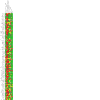
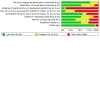
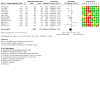
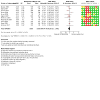
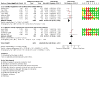
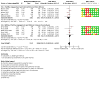

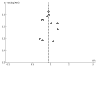
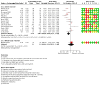
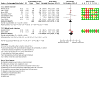
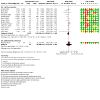
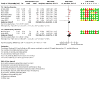
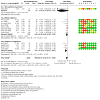
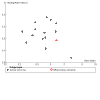

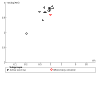
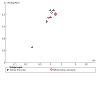
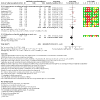
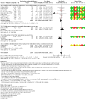
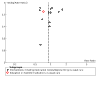
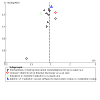
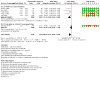

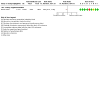
References
-
- Rubenstein LZ. Falls in older people: epidemiology, risk factors and strategies for prevention. Age and Ageing 2006;35 Suppl 2:ii37-41. [PMID: ] - PubMed
-
- Kennedy CC, Ioannidis G, Thabane L, Adachi JD, Marr S, Giangregorio LM, et al. Successful knowledge translation intervention in long-term care: final results from the vitamin D and osteoporosis study (ViDOS) pilot cluster randomized controlled trial. Trials [electronic resource] 2015;16:214. - PMC - PubMed
-
- Hill AM, Hoffmann T, Hill K, Oliver D, Beer C, McPhail S, et al. Measuring falls events in acute hospitals-a comparison of three reporting methods to identify missing data in the hospital reporting system. Journal of the American Geriatrics Society 2010;58(7):1347-52. [PMID: ] - PubMed
-
- Sutton JC, Standen PJ, Wallace WA. Patient accidents in hospital: incidence, documentation and significance. British Journal of Clinical Practice 1994;48(2):63-6. [PMID: ] - PubMed
Publication types
MeSH terms
LinkOut - more resources
Full Text Sources
Medical
Research Materials

